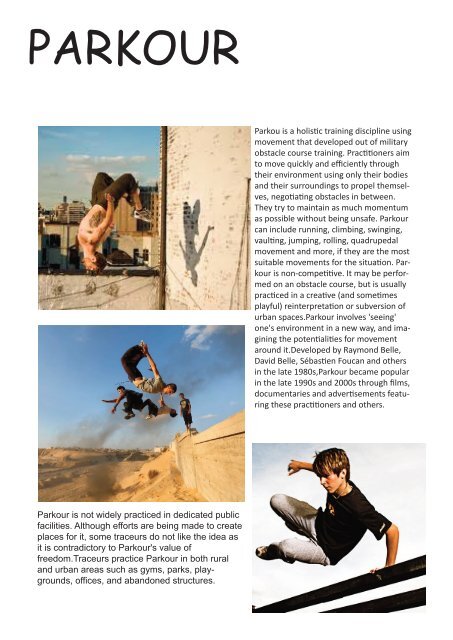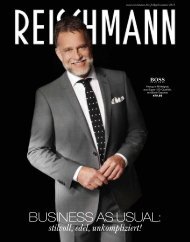EXTREME SPORTS LEARN TO RIDE
EXTREME SPORTS LEARN TO RIDE
EXTREME SPORTS LEARN TO RIDE
Create successful ePaper yourself
Turn your PDF publications into a flip-book with our unique Google optimized e-Paper software.
PARKOUR<br />
Parkour is not widely practiced in dedicated public<br />
facilities. Although efforts are being made to create<br />
places for it, some traceurs do not like the idea as<br />
it is contradictory to Parkour's value of<br />
freedom.Traceurs practice Parkour in both rural<br />
and urban areas such as gyms, parks, playgrounds,<br />
offices, and abandoned structures.<br />
Parkou is a holistc training discipline using<br />
movement that developed out of military<br />
obstacle course training. Practtoners aim<br />
to move quickly and efficiently through<br />
their environment using only their bodies<br />
and their surroundings to propel themselves,<br />
negotatng obstacles in between.<br />
They try to maintain as much momentum<br />
as possible without being unsafe. Parkour<br />
can include running, climbing, swinging,<br />
vaultng, jumping, rolling, quadrupedal<br />
movement and more, if they are the most<br />
suitable movements for the situaton. Parkour<br />
is non-compettve. It may be performed<br />
on an obstacle course, but is usually<br />
practced in a creatve (and sometmes<br />
playful) reinterpretaton or subversion of<br />
urban spaces.Parkour involves 'seeing'<br />
one's environment in a new way, and imagining<br />
the potentalites for movement<br />
around it.Developed by Raymond Belle,<br />
David Belle, Sébasten Foucan and others<br />
in the late 1980s,Parkour became popular<br />
in the late 1990s and 2000s through films,<br />
documentaries and advertsements featuring<br />
these practtoners and others.
















